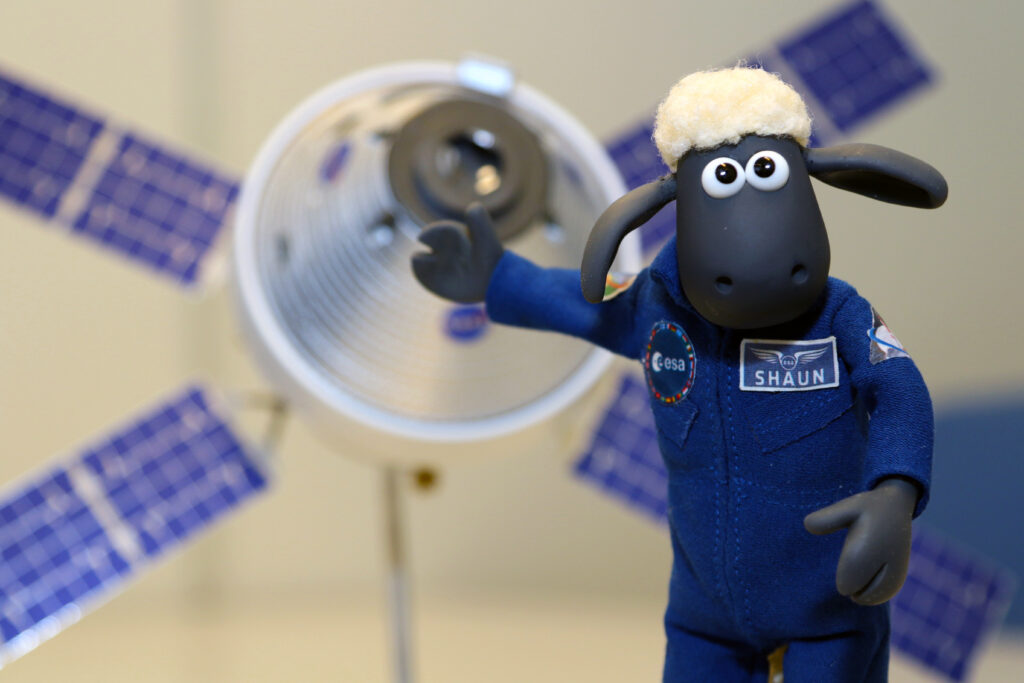Commercial Infrastructure and Support Industries
Commercial Human Spaceflight
ESA Sending Heroic, Fictional Sheep Aboard Artemis I


NASA says its Artemis I flight set to launch as soon as late August will be an uncrewed lunar fly-by. The Paris-based European Space Agency would beg to differ. Shaun is leaving the happy confines of Mossy Bottom Farm to lead the flight around the Moon, an agency press release announced.
2017 – Commercial Human Spaceflight – Snapshot
Multiple companies are continuing to work toward launching humans on suborbital flights in the near future…
2016 – Commercial Human Spaceflight – Snapshot
In FY 2016, funding for NASA’s Commercial Crew Program increased by ##%, from $## million in FY 2015 to $## billion. Boeing and SpaceX continued to make progress in the…
2015 – Commercial Human Spaceflight
In 2015, NASA put in orders with both SpaceX and Boeing to conduct their first operational commercial crew rotation missions under the Commercial Crew Transportation Capability (CCtCap) Program. The first operational flights would take place in late 2017, following the companies’ completion of NASA human spaceflight certification milestones, including crewed test flights to take place earlier in 2017.
Economy: Space Economy – TSR 2015
2014 – Commercial Human Spaceflight
Since 2011, NASA has relied on contracts with the Russian Federal Space Agency, Roscosmos, to send American astronauts to the ISS. The price for each seat on a Russian capsule rose to $## million in 2014, up $# million from 2013. NASA had earlier decided that the milestone-driven Commercial Crew Program, based in part on the Commercial Orbital Transportation Services (COTS) Program, would help speed the goal of advancing development of a commercially operated crew transportation system capable of ferrying astronauts to and from the ISS. In November 2013, NASA issued the final Request for Proposals for Phase 2 of the Commercial Crew Program, called the Commercial Crew Transportation Capability (CCtCap) contract.
Economy: Space Economy – TSR 2014
2013 – Commercial Human Spaceflight
The retirement of the Space Shuttle created an impetus for the development of commercial cargo and crew transportation services. Several corporations are taking advantage of this space transportation capacity vacuum to speed development of new spacecraft and rockets. The milestone-driven Commercial Crew Program, based in part on COTS, was put in place in 2010 with the goal of advancing development of a commercially operated crew transportation system capable of ferrying astronauts to and from the ISS. NASA has awarded more than $## billion toward the development of commercially operated manned space vehicles through a series of phases identified in the NASA Commercial Crew Funding exhibit. In November 2013, NASA issued the final Request for Proposals for Phase 2 of the Commercial Crew Program, called the Commercial Crew Transportation Capability (CCTCap) contract. The aim of the new funding is to ensure that commercial operators meet NASA’s safety requirements and will include at least one crewed demonstration mission to the space station before 2017. CCTCap Phase 2 awards are scheduled to be announced in mid-2014.
2012 – Commercial Human Spaceflight
The retirement of the Space Shuttle is spurring development of commercial cargo and crew transportation services. NASA’s Commercial Orbital Transportation Services (COTS) program, started in 2006, has awarded contracts to private companies to develop vehicles that transport cargo and personnel to and from the ISS. Although some companies, such as Boeing and Sierra Nevada, had started vehicle development work on their own, COTS funding has sped up the development process. So far, most COTS funding has been directed toward the development of two rockets and their associated cargo-carrying spacecraft. SpaceX has developed the Falcon 9 rocket and Dragon capsule, while Orbital Sciences is developing the Antares rocket and Cygnus freighter.
2011 – Commercial Human Spaceflight – Snapshot
New commercial transportation services are in development to carry cargo, passengers, and astronauts into space. In the United States, the retirement of the Space Shuttle in July 2011 creates an opportunity for new commercial cargo transportation services to resupply the ISS. The Commercial Orbital Transportation Services (COTS) program, started in 2006, is designed to help develop U.S. commercial cargo transportation systems. Through Space Act Agreements, SpaceX and Orbital will receive up to $## million upon successful completion of their current agreements in 2012. In April 2011, NASA estimated that it would invest a total of $## million in the COTS program from its beginning in 2006 to its completion in 2012. This figure exceeds the original program cost estimate of $## million. The bulk of COTS funding has been directed to two launch vehicles and associated spacecraft: Orbital Sciences’ Antares (formerly Taurus II) rocket with its Cygnus spacecraft, and SpaceX’s Falcon 9 rocket with its Dragon spacecraft. Both SpaceX and Orbital have won contracts under NASA’s Commercial Resupply Services (CRS) initiative, a follow-on to the COTS program, to provide cargo supply services to the ISS. Under these contracts, SpaceX and Orbital are required to launch a total of 20 tons of cargo each to the ISS through 2016.